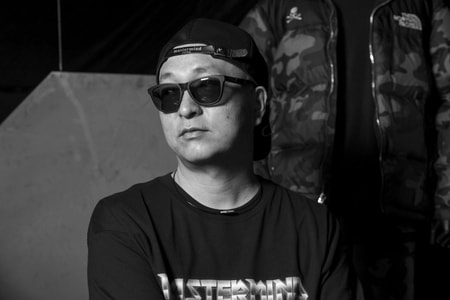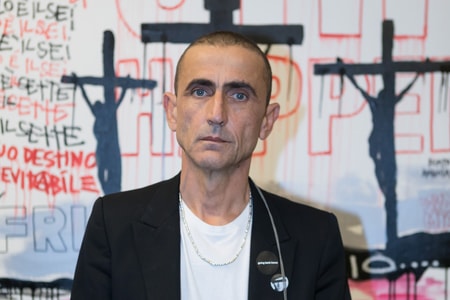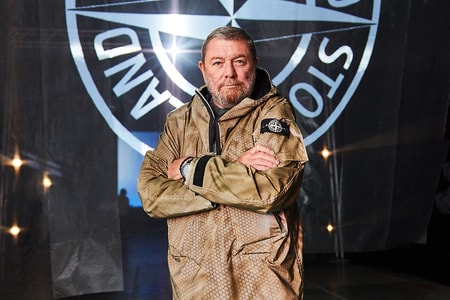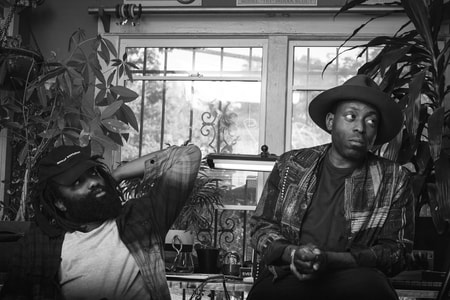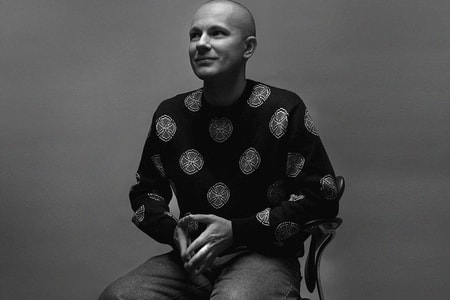
Since you’ve founded KNOW WAVE in 2013, what are the biggest obstacles you’ve faced? Any major takeaways?
Basically, with KNOW WAVE, it’s an extension of the gallery Moran Bondaroff. It was difficult to just bring on a component that was just kind of like a performance art space for people to use, to listen in, or to paint a picture in their minds. At first I wasn’t sure if we wanted to have it directly attached to the gallery because we will be working with a lot of different bombardish creators that maybe weren’t necessarily represented by the gallery, so that was one of the things we were thinking about. But then at the same time there’s so much politics in galleries and the art world, brands and businesses, we also wanted to try to create this kind of place where you could start bringing down those walls and giving other brands and galleries and artists that are not represented by our own gallery an opportunity to use the space in that platform we created; and also for us to kind of be able to interact with them in a way you wouldn’t be able to do in certain arenas.
From a vacant cathedral to “Communiversity” at Art Basel, your pop-up radio platform is unprecedented. What are the pros and cons of this medium?
We *had a visual space in the past, but what happened was that neighbors or people complain about what’s going on since they didn’t really know what's happening since it’s kind of like an old style of creative scenes where you just take a space and turn it into something. I love the idea of how people deal with their own spaces whether if it’s a museum, exhibition, at a space, at a gallery, whether it’s an artist in a studio, a band performing.
I really like the idea of what that looks like visually and what that sounds like because not one is the same. Sure there may be some obstacles sometimes, like the quality might not be the best in certain places but yeah I like pushing the boundaries and just being supportive so people could feel free when they’re creating. I want them to be in their environment. We’re providing this platform for people to use and we want them to activate it easily and stuff. So I think it’s visually cool being able to capture moments and not force them. We want you to enjoy and use the space however you like it.
What are your thoughts on the recent surge of pop-up shop events in the industry?
The word “pop” gets a little dirty. Every now and then a word gets dirty—like, "streetwear" could get dirty. But now “pop-up” is getting dirty. As I was saying that I was thinking about how it sounds like an Airbnb. People love Airbnb because it’s a new environment and you don’t have to own the space. You could go anywhere for a week and have a new adventure. It’s kind of cool to be able to move around; it’s a way for people to be creative and figure out how to deal with space, troubleshoot it, clean up the space, whatever it is. I think it is important to have to go through things quickly, in and out.
This year, you’ve collaborated with Supreme, MoMA PS1, as well as the Safdie Brothers for their Good Time motion picture. How did these collaborations come about?
I guess, in this situation, these are all relationships I’ve had for 20 somewhat years of being a part of this kind of lifestyle that we are all living in and stuff, so a lot of it was just through relationships and trust we all have for each other. Another situation is that I like to work with institutes, brands that are not traditional and find a way to collaborate with them. Everything is pretty much organic. I think it’s pretty cool to do stuff with like A24 or with Good Time because they are working with some friends of mine, so we’re just like “cool, let’s support each other and be a part of this thing.”
Some others say that the lines are blurred about what’s going on in culture and what’s going on in general, but at this point I think there are no lines anymore. There are no rules but to use all the avenues that we can to express ourselves. So when MoMA and Printed Matter wanted to collaborate with us, these are important gatherings of musicians, artists and authors. They are tremendous, so it’s cool to be a part of their story and being able to contribute to it.
How do you balance maintaining your Moran Bondaroff gallery with KNOW WAVE?
Any creative startup idea becomes a full-time job and it’s very time consuming. Luckily with the gallery I had my two partners and we worked on this together. We worked on the gallery a hundred percent, we worked on KNOW WAVE a hundred percent. Our priority number one is representing the Gallery’s artists and being able to build their careers along with them—that’s probably what separates KNOW WAVE from other cultural movements we are dealing with. With KNOW WAVE, it’s amazing because so many people contribute to this and see the value of being a part of it and using the platform for themselves, but also at the same time lending a hand to this thing so it kind of goes back to that organic co-op kind of feeling. And you know, years ago, I came up with a thing called “Never Not Working” and it still applies to now. It’s always 24 hours in what we do, we don’t have time off. Using KNOW WAVE also keeps a balance for the gallery and serves a purpose for the gallery.
You’ve stated in previous interviews that KNOW WAVE is “undefinable.” However, if you had to choose three words to describe it, what would they be?
I have a list… hold on. It’s “discovery,” it’s “experience,” there’s one more… I always forget the third one I use… “exploring.”





